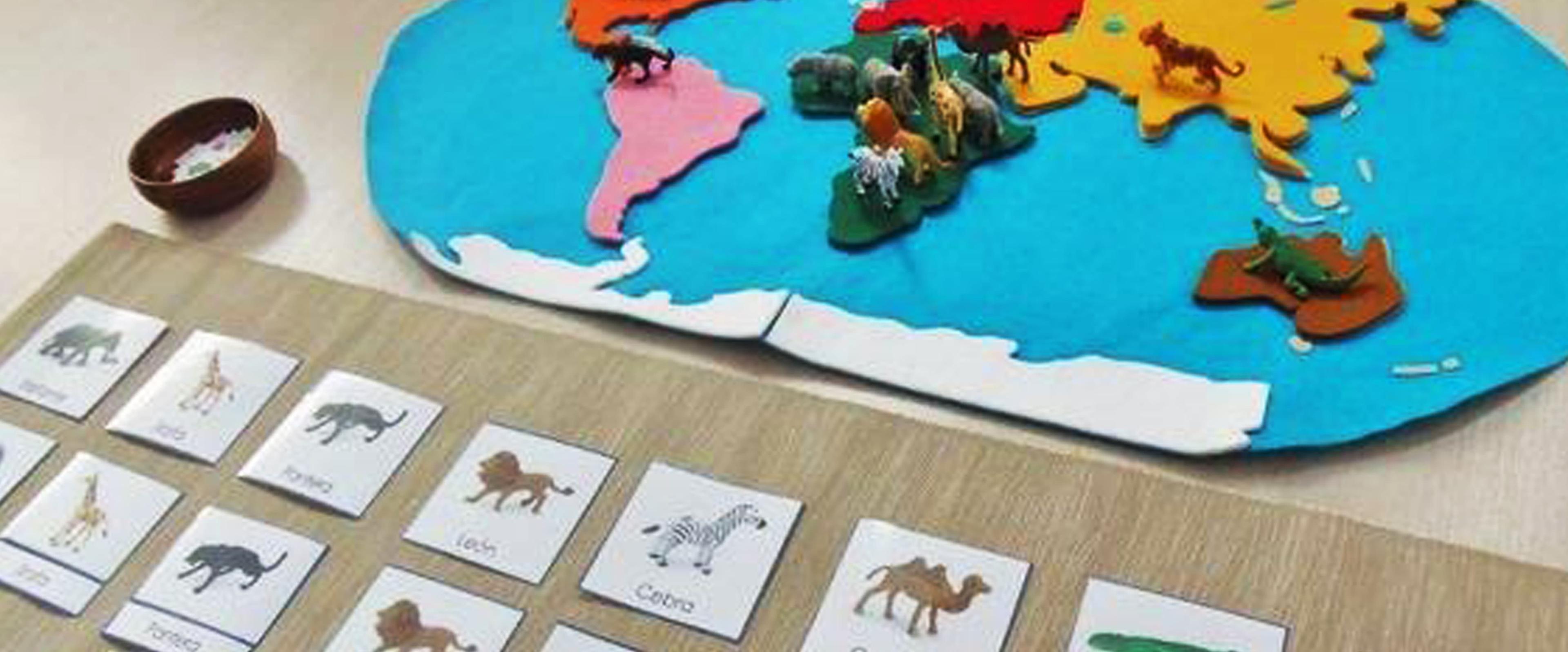In Montessori education, the study of geography is an important aspect of the curriculum. One of the key tools used to teach geography is the map.
Overview of the map of the hemisphere
One of the most valuable maps for understanding the world is the map of the hemisphere. The hemisphere is divided into four regions: the Northern Hemisphere, Southern Hemisphere, Eastern Hemisphere, and Western Hemisphere.

Benefits of using Map of the hemisphere
- Teaching physical features of the world: The study of the map of the hemisphere in Montessori education begins with the child's exploration of the physical world. Through hands-on experiences and exploration, children learn about the different landforms, bodies of water, and natural features. The map of the hemisphere provides a visual representation of this physical world, allowing children to better understand the relationships between different features.
- Studying different cultures and peoples: Montessori educators use the map of the hemisphere to teach children about the diversity of cultures and peoples around the world. The map shows the location of major countries, cities, and landmarks, allowing children to explore different cultures and traditions. By studying the map, children gain a sense of appreciation and respect for the different ways of life around the world.
- Encouraging curiosity and critical thinking: Throughout their study of the map of the hemisphere, children are encouraged to ask questions and make connections. They may work in small groups to create their own maps or explore different aspects of the world in depth. The Montessori classroom provides a rich environment for exploration and discovery, and the map of the hemisphere is an important tool for fostering curiosity and critical thinking.
- Impact of human activity on the environment: The study of the map of the hemisphere also helps children to understand the impact of human activity on the environment. Through studying the distribution of natural resources, such as water and minerals, children gain a better understanding of the environmental challenges facing the world. They also learn about the importance of sustainable practices and the role they can play in preserving the environment for future generations.
- Understanding the interconnectedness of the world: In the Montessori classroom, the study of the map of the hemisphere is often integrated with other areas of the curriculum. For example, children may learn about the climate of different regions, the plants and animals that live there, and the people who call those regions home. This integrated approach helps children to see the interconnectedness of different aspects of the world and to develop a holistic understanding of the world around them.
Thus, the map of the hemisphere is a valuable tool for exploring and understanding the world in Montessori education. Through the study of the map of the hemisphere, Montessori educators are helping to prepare children for a lifetime of global citizenship and environmental responsibility.

